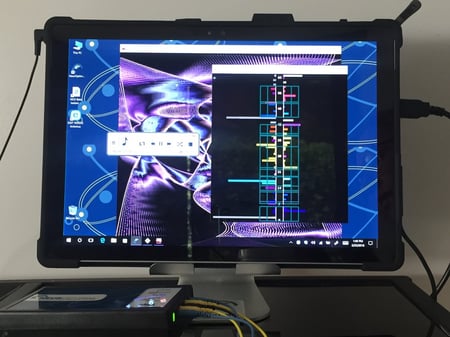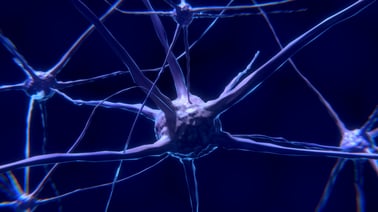 NYC Therapist And Clinical Social Worker, Alison Pepper, Shares Her Experience Training With The NeurOptimal® Neurofeedback System
NYC Therapist And Clinical Social Worker, Alison Pepper, Shares Her Experience Training With The NeurOptimal® Neurofeedback System
But first to give a basic introduction to neurofeedback for those readers who are unfamiliar with this new but growing technology in the field of brain health and wellness.
What is NeurOptimal® Neurofeedback?
Neurofeedback (NFB) helps to promote brain wellness. Neurofeedback works on improving brain functions so you can better engage in your day-to-day processes and make more conscious, healthy decisions. You can read more about it on Quora. 
Neurofeedback wellness training offer additional help managing sleep, helps you with mood stability, performance anxiety and mental clarity. NFB is in use since the 1970s, but its growth has been slow due to still developing computing technology. For a long time brains computed faster than computers so scientists had to wait until computing speed became sufficiently fast.
Furthermore, as NFB equipment is expensive, so many clinicians shy away from using it. Nonetheless, there is a growing interest in neurofeedback and its efficacy. Neurofeedback wellness systems also help you stabilize brain activity to reduce negative effects connected with performance anxiety and mood, and sleep management.
ALSO READ
What is neurofeedback training?
Neurofeedback training is a brain training when your brain learns how to effectively change its states. It teaches you to change gears from being revved up to going back into relaxation, and regulation, and knowing which moments need which state. As example, we've all had those experiences when we found ourselves yelling, when, very quickly we realize it's not necessary and only adding to the problem. Most of the time the appropriate gear is the state called regulation. In this brainwave zone we can focus, we are calm, open, our thoughts are not racing.
This brain function is called self-regulation and it is connected to the brain's basic property of neuroplasticity. You can read more about it in the article by the New York Times.
Furthermore, as the "training" implies, it is important to train your body and brain. It is a flexible muscle in your body, and similarly, as let's say your triceps, it has an ability to grow and adapt to the environment. Given this ability, and what we know about physical training at the gym, neither your triceps nor your brain, will get in shape after a single or a few session. It has to be a commitment but is worth the effort if you value being at your best mentally and emotionally.
This principle of "training" brings up two important questions: How many neurofeedback training sessions will I need, and how long will results last?
 How long do results last?
How long do results last?
It depends on your lifestyle and how well you take care of yourself. Do you have a lifestyle that nurtures your health or do you push it to the limits? But assuming you take relatively good care of yourself and don't have chronic stress with poor self-care, once you do your basic brain training you have created a good foundation for resilience. We could compare this type of training to a different kind of training such as learning how to ride a biking. Do you remember your first time you tried to ride a bike? And how it took some time to master it? But once you learned, you created a body memory and even if it's been years since you rode, once you get on your body quickly remembers what to do. With brain training it is a similar process. If we haven't trained for a while and we notice we are not managing our sleep well, snapping at people at work, and easily distracted. When we train again, we quickly 'remember' how to regulate ourselves and get back on track with our wellness regimes.
You can read more about Neurofeedback in this New York Times article.
With regard to how long it takes to notice changes from neurofeedback, the brain needs time to rewire itself. Whenever we learn something new or repeat behaviors over and over, the brain goes through the process of building and /or strengthening connections between neurons. The brain is made of hundreds of billions of neurons that are interconnected in so-called neuron sites. Each neuron has then as much as 100.000 connections with other neurons. You can watch an astounding video of scientists at Cardiff University modeling brain processes here.

How many neurofeedback sessions do I need?
With the NeurOptimal® device, there is no fixed number. The goal is optimization of brain wellness, and was mentioned before, there are many factors that contribute to our wellness. As well, your personal goals and preferences play the largest role in how many sessions you will ultimately decide to do. Here are some contributing factors:
- Age;
- Physical condition;
- Mental condition;
- Previously tried neurofeedback or not;
- Diet;
- Personal goals;
- And other minor factors.
That is a lot of variables to consider, but in general people train for anywhere between 20 and 60 for shorter-term goals. And for some people the goal is optimization of performance such as during a child's school years, or overall wellness for one's lifetime. Some train with tune-up sessions or purchase the equipment and train weekly for years.
You can see more details about the brain at Quora.
How frequent should the training sessions be?
Like any learning, more frequently at first tends to speed up the learning process. Many people train 2-3 sessions per week, and some as little as once a week. The other important variable is consistency. The most satisfied people train regularly and put themselves on a schedule, like piano lessons, once a week.
You can read more fascinating stories of real people using different devices at Quora.
How long does the Neurofeedback session take?
Each session's recommended time reserve is 60 minutes. Who can't get free for 60 minutes, there are also 1-hour plans. The program running time itself is 33 minutes, and the rest is arranging sensors, filling out the self-reporting changes form, and un-hooking after the session.
Interested in not getting burned out? Read at Quora about how not to overload your brain.
NeurOptimal Neurofeedback Review - First few months of training
So you can have a sense of what the experience is like, here is my experience of neurofeedback during my first few months.
Over the summer, I had the opportunity to begin neurofeedback on myself, and I loved it. That first positive experience of feeling calm and centered made me want to understand how it worked. I had no previous experience with brain training and didn't remember anything I learned in graduate school about the brain's electrical patterning so I was eager to familiarize myself about how it worked.

But to go back to my experience during my first NeurOptimal® session, after the sensors were placed on my head and clipped to my ears, and the 'start' button was pressed there was nothing else for me to do. I found myself a little disoriented without a task in front of me. Soon I shifted my focus to the opportunity ahead to just let go. I enjoyed looking out the window, listening to the NeurOptimal music (the feedback is through precisely timed interruptions in the music that are cued by electrical signal changes in the brain). As a busy New Yorker and disciplined meditator, I especially loved that for 33 minutes I could sit and relax, and didn’t have to follow my breath, practice anything, or do anything if I didn’t want to, the work was being done by my automatic functioning brain as it was cued by the precisely timed interruptions in the music. After a few minutes, I could feel the muscles of my shoulders start to drop.
After about a month of my weekly, sometimes twice-weekly summer neurofeedback therapy sessions, I was feeling more relaxed, the tension was releasing in my body, but also in my mind. I was focused and alert, but not in the usual hyper-vigilant way I had grown accustomed to as a stressed city dweller.
After my first month, my circumstances changed and life became increasingly stressful. It was harder to get myself in for my sessions and I noticed my initial training experience was harder to access. The noise of my life became a bit louder than the calm and focus of training experience. But because I'd done my studying about how neurofeedback worked, I wasn't deterred and I made myself get my regular sessions in.
NeurOptimal® Neurofeedback is dynamic and works millisecond-by-millisecond with my current state, and brain patterns. I knew it was doing its job to help me rewire my patterns by alerting me to them regardless of whether I was feeling particularly focused or happy that day.
The one piece of advice I'd been given was to make sure that I was consistent in my sessions and to think of it like learning an instrument or a foreign language: faster results when we're learning in at a consistent pace with no large gaps where we can forget what we learned.
Despite the new schedule challenges I kept at it; kept training, and also kept doing all the other things I do when I’m super stressed. During this time, I noticed two things different from other high-stress times in my life: my body felt relaxed, and I was aware of my negative thinking and stories of worry.

[ NeurOptimal Reviews - Read Success Stories from Our Clients ]
With time, my life stressors eased, and I have been continuing my weekly neurofeedback sessions. I am now more aware of my body being tired and sleeping more, which I know is something my body has been wanting and needing for some time. With regular training, I feel I am now better able to identify the subtle and not so subtle signs my body is giving me, and respond accordingly.
As a new Certified Trainer, I have also started to train others. This has been a moving experience. I now understand why it is the policy at Neurofeedback Training Co that all trainers train themselves with NeurOptimal®. To see directly the benefits of this training on myself, and to be able to share that with other people is such a gift. When they ask me about the benefits I can speak to them from my experience. It wasn't a straight line of gradually feeling a better but rather initial increase in calm and groundedness, then the bump of life stressors and feeling some worry and overwhelm, but I knew to keep training even though the benefits weren't as pronounced.
With each week I'm growing more confident in the benefits. I can even see the shifts in peoples faces from when they first sit down and when they finish their session. Relaxed, brighter, and those who are sleep deprived, they often say, "Wow. I'm tired." To which I respond, "Sounds like you're becoming more aware of how exhausted you are. I noticed that too when I first started my brain training."